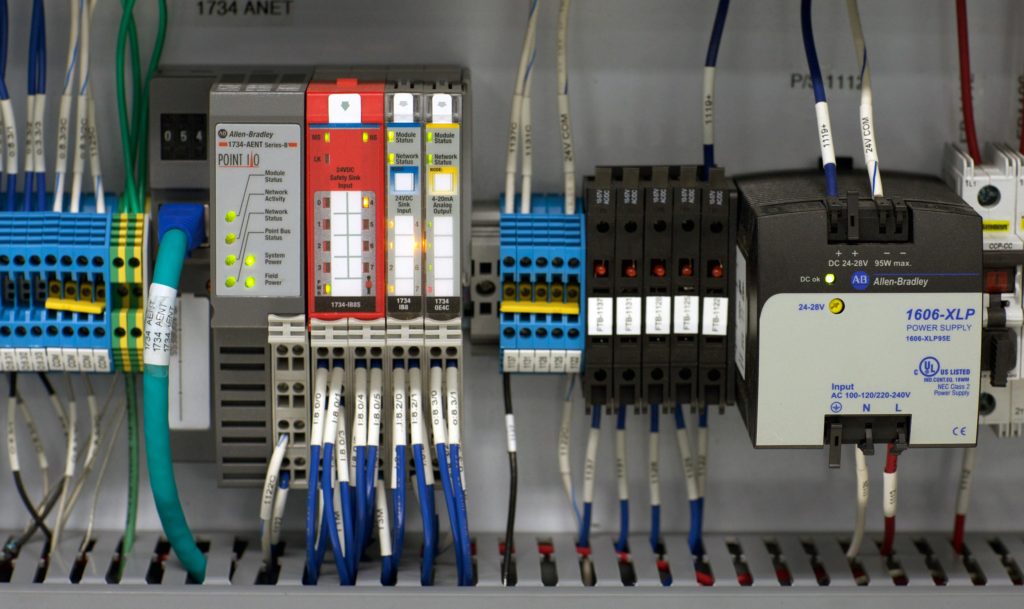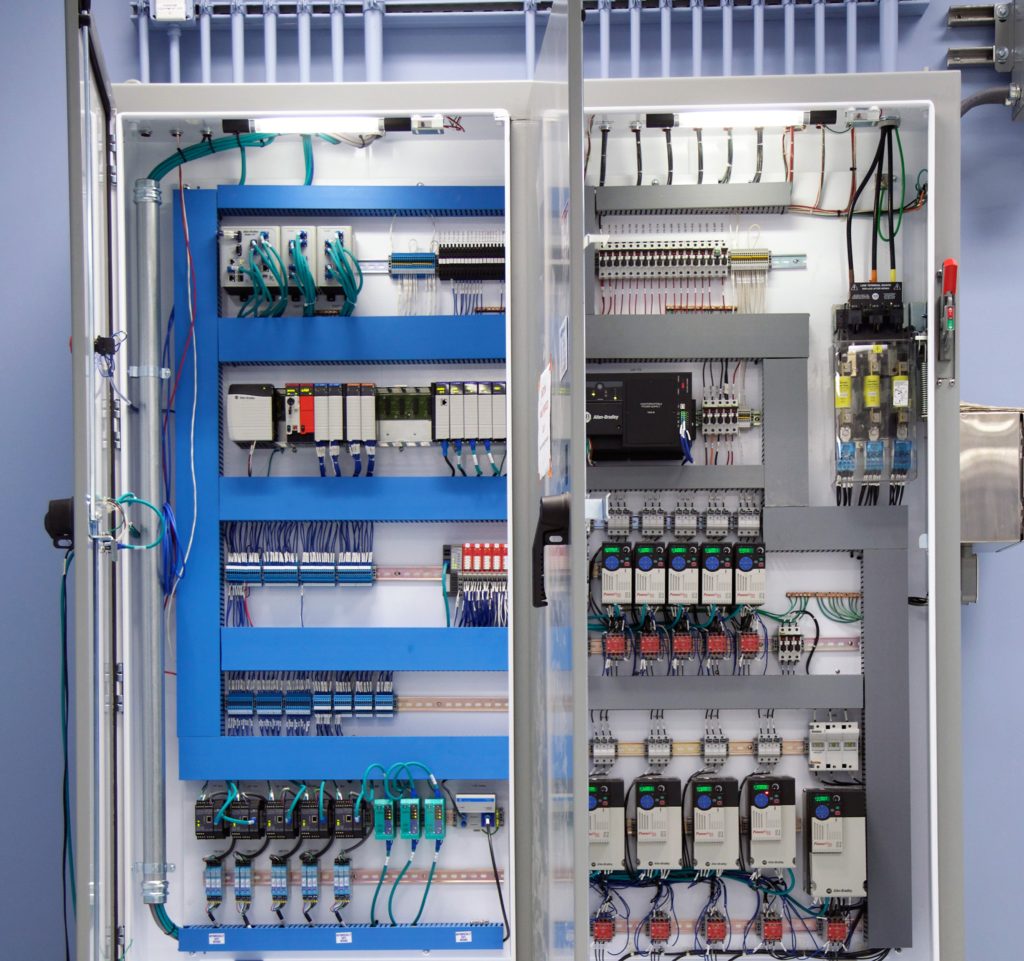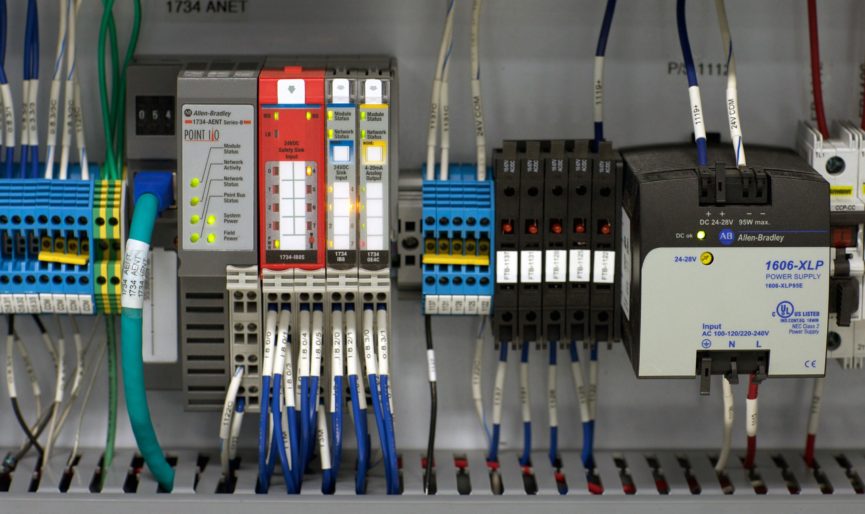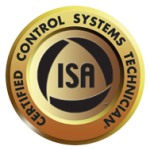Depending on your process, a control panel may be small – designed to control a simple batching process – or complex – designed to control several loops and integrate various pieces of equipment in various locations around your plant. As such, these panels can house an increasing array of devices. In addition, you may want to plan for a future expansion.
When selecting a vendor to build your control panels, it is wise to do some homework and check out their work. We’ve put together a few Frequently Asked Questions to help guide you through the process of selecting an automation company to build your control panel.
Questions to ask…
Are they UL Certified? Do they use UL components?
UL is a global, independent safety science company with over 100 years of expertise in safety solutions. UL standards encompass their extensive range of safety research and scientific expertise. Most control panels fall under the UL-508 specification. This requirement covers industrial control panels intended for general industrial use and operating from a voltage of 1000 volts or less.
Within this standard, UL-508A is the UL standard for the construction of Industrial Control Panels. It provides guidelines to panel builders on various issues including proper component selection, wiring methods and calculation of short circuit current ratings. A panel that carries the UL-508A listed mark means that the panel, it’s electrical components and construction meet UL-508A standards.
Electrical inspectors look for this mark as evidence of third-party certification. This is important to a local municipal inspection authority as well as the panel purchaser. It shows that the panel is compliant with acceptable safety standards.
Do they have other certifications?
Other than UL Certifications, most engineers and panel builders also have other industry certifications. Other organizations include CSIA – the Control System Integrators Association and ISA – the International Society of Automation. Both organizations perform independent audits on the panel builder and/or the company and provide a non-biased, objective assessment.
CSIA Certified companies have demonstrated through an independent audit that they adhere to CSIA’s comprehensive Best Practices. Key areas covered include not only project management, system development and quality assurance, but also covers the company’s financial health, human resources and marketing and business development.
ISA certifies a technician’s skills. Through their Certified Control Systems Technician (CCST) program, they provide an objective assessment and confirmation of a technician’s skills. ISA’s three levels of CCST certification require differing degrees of technical experience, education, and training. CCSTs calibrate, document, troubleshoot, and repair/replace instrumentation for systems that measure and control level, temperature, pressure, flow, and other process variables.
Do they keep their panel building area clean?
Keeping your panel building facility clean may sound like a no-brainer, but the benefits of a clean facility go beyond simply clean floors. The most important component of any work environment is its people. By providing a clean and hygienic workplace, businesses can make a significant positive impact on the health and safety, productivity and satisfaction of employees.
Studies have shown that employees in a clean facility are 12% more productive. What would this look like in a panel building shop? It means:
- projects are clearly organized and in their own workplace
- components are labeled and stored with the correct project
- tools and other supplies are clearly labeled and easily accessible
- trash and other non-used supplies are removed from the work area regularly
- dust, dirt and debris are reduced that could cause a fault within the panel
Do they standardize the layout of the panel?
While neatness may be the first thing that jumps out about a well-designed panel, there are other aspects that you should look for in good control panel design. These aspects include component placement, labeling, panel size and space and wire design.

- Components should be arranged in a logical and functional manner. High and low voltage components should be segregated from each other. Since most panels have their main power disconnect switch in the upper right of the panel, it makes sense that the highest voltage rating components should be at the top with decreasing voltage level components below. The PLC racks and other sensitive electronics are typically located away from the hotter power components.
- Labeling of components, especially wiring, is key and the labelling should be consistent within the panel. Wiring and components should also correspond to the P&ID, that way troubleshooting will be easier down the road.
- Panel size and spacing should obviously be large enough to house the needed components, but also allow room for possible future expansion. Proper heat dissipation is also critical within a control panel. A well-design panel will incorporate the means for expelling heat excess vertically within the enclosure. Additional room should also be left at the bottom for coiling spare field wiring.
- A good wiring plan uses both the right type and the right amount. Enough space should be given so that each wire can be neatly connected to its component and that its label can be clearly seen. Finally, wiring should be firmly connected so that wiring cannot be easily pulled out or lose connection.
Do they provide documentation with the panel?
Last but not least, your automation supplier should provide all of the proper documentation along with the panel itself. At a minimum, documentation should include any layout drawings and/or P&ID’s, electrical schematics and bills of material for the components. If you requested a UL panel, the panel should also include a UL sticker and verification that all components are UL-Certified. Panels should also have a tag that includes the manufacturer and the project number.




